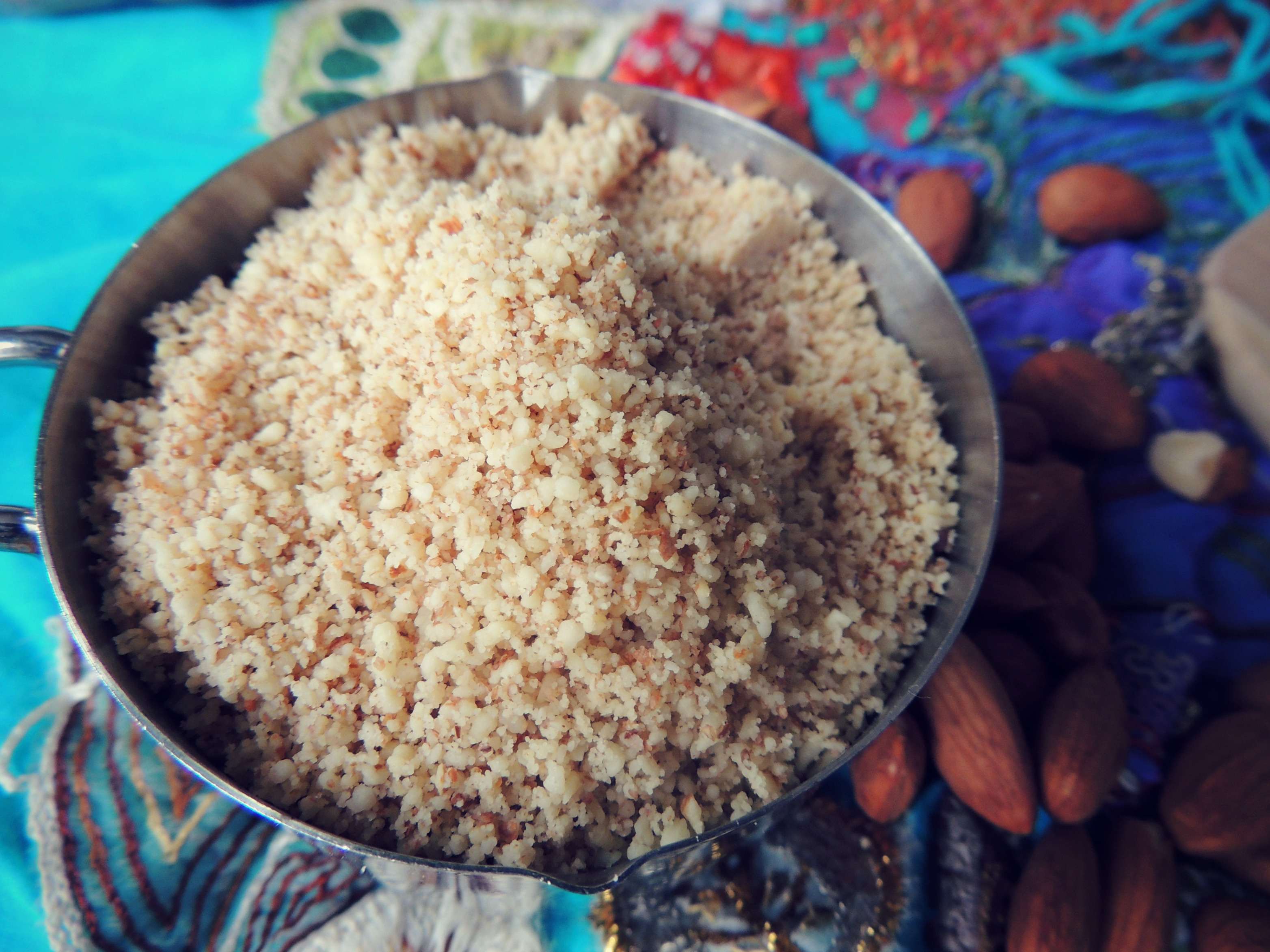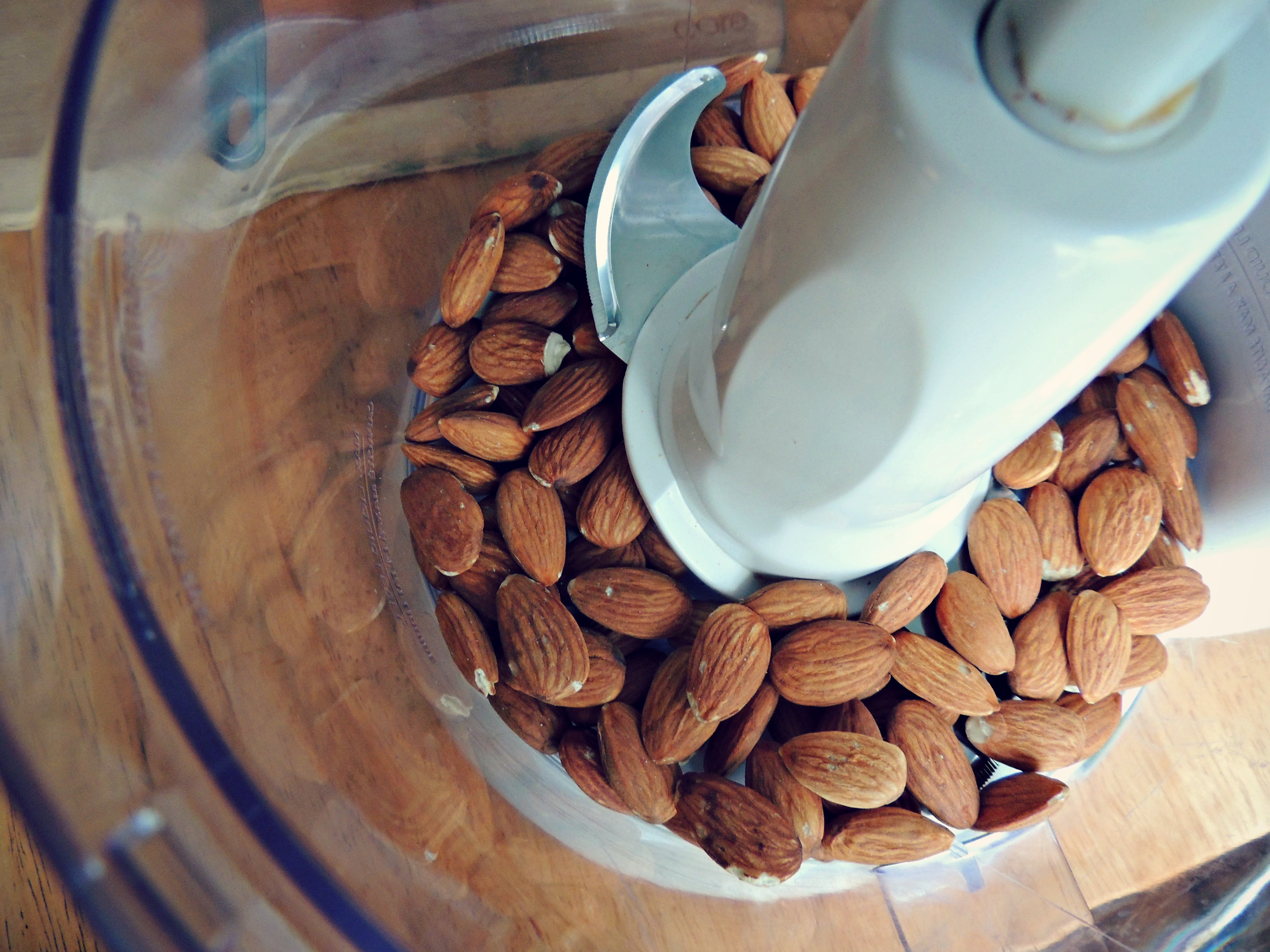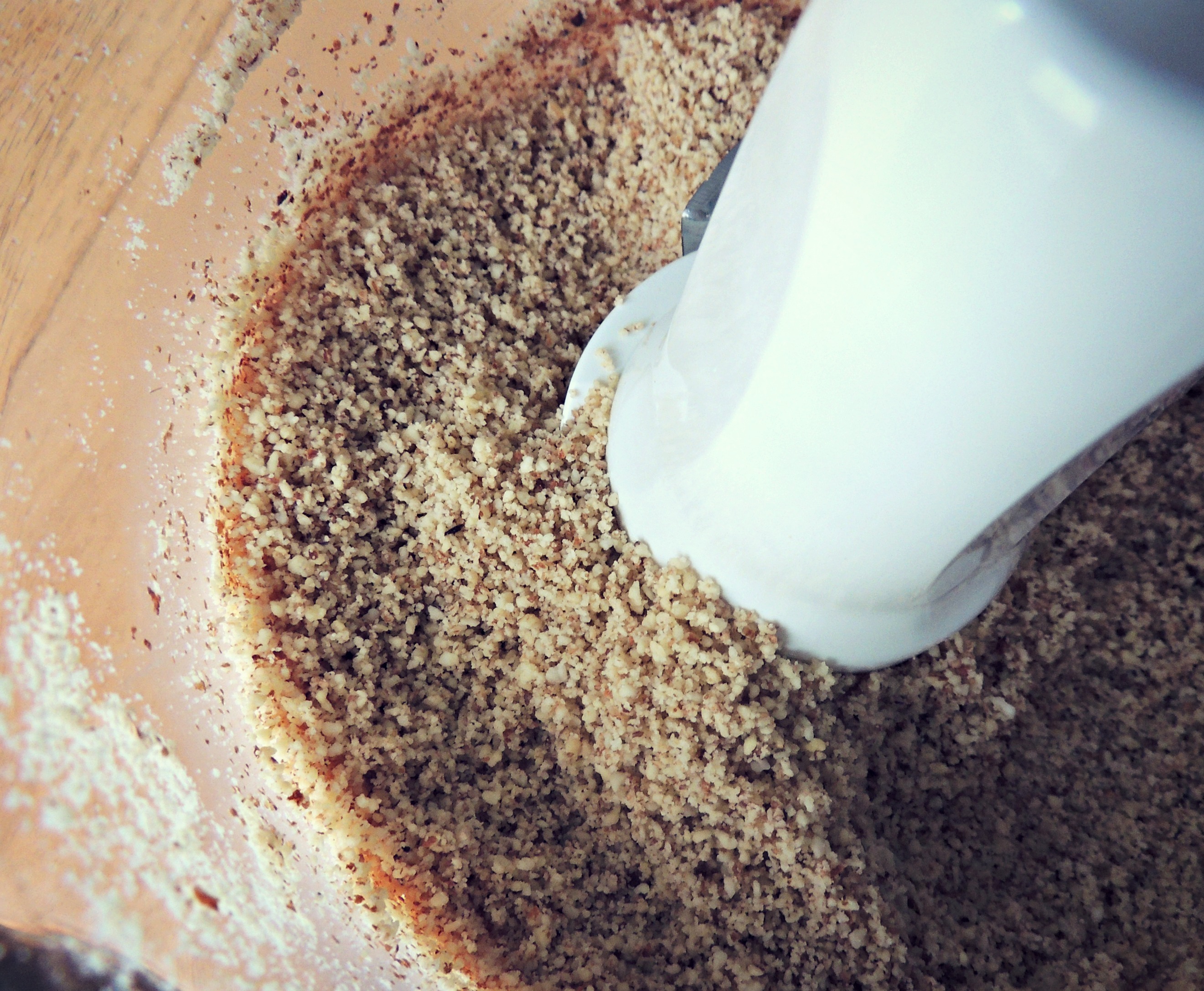Making almond flour is quite possibly one of the most simple, cost saving and gratifying things that you can do in the kitchen- why, it’s practically magic if you ask me. With a nonchalant toss of a handful of almonds into the food processor, you will be delighted to discover a grain-free, highly nutritious, pleasant tasting flour that can be used for many recipes. Almond encrusted fish spritzed with lemon, pancakes dripping with homemade butter and cupcakes topped with a swirl of coconut spread- incorporating almond flour into your gluten-free cooking and baking opens up an array of exciting possibilities and can bring a flare of creative inspiration back to your kitchen. Learn how to make your own almond flour from soaked almonds in less than 5 minutes!

Almond Flour vs. Almond Meal
There is a lot of confusion out there about almond meal and almond flour. There are bags of almond meal packed onto the shelves at the grocery story, and yet most recipes call for the use of almond flour...so what’s the difference? Although often used interchangeably, almond flour is technically created from finely ground blanched almonds from which the skins have been removed, yielding a soft, fine, bright colored flour. Alternatively, almond meal is made from raw almonds with the skins still on, creating a final product that is much more dense and grainy. While the two are generally used interchangeably and with great success in most recipes, there are some subtle differences that may be worth noting- especially if you plan on doing a significant amount of cooking and baking with this high protein, mineral rich food. Because it is lighter and more uniformly textured, almond flour lends itself well to cookies, treats and baked goods that are best when fluffy. It also combines well with organic coconut flour to make a dynamic, versatile, flavor-packed and nutrient rich grain-free baking flour. Almond meal is best suited for recipes that call for less than 1/2 cup of almond flour due to its overall heaviness. However, it can be more convenient and economical to find whole almonds, and the flavonoid-rich almond skins are maintained with all of their natural goodness. Taking these considerations into stride, there are no scary, stringent rules to cling to when it comes to using almond flour or meal. My suggestion is to get in the kitchen, do some experimenting and figure out what works best in your favorite recipes!
Whether you use almond meal or almond flour however, it is important to use soaked and dried nuts whenever possible. Nuts and seeds naturally contain anti-nutrients and enzyme inhibitors that can cause digestive strain when consumed in significant amounts by humans. Through traditional practices of soaking and drying, these pesky toxins are effectively neutralized and the bio-availability of nutrients naturally enhanced. Almonds are rich in protein, manganese, potassium, copper, vitamin E and healthy monounsaturated fats, which should be savored in their optimal state. Earlier this week we discussed how to soak and dry almonds at home, as well as trusted sources of quality soaked and sprouted almonds such as Better Than Roasted Nuts, if you prefer.
It is also worth considering that due to the fear-driven legislation passed in 2007, most almonds in the United States must be harshly pasteurized prior to being sold commercially to "prevent salmonella contamination." While this largely unfounded and destructive law has been rigorously debated by farmers and consumers alike, countering efforts have been slow to progress, making it very difficult to find unpasteurized almonds in stores. Due to faulty and deceiving labelling laws, almonds are even allowed to be marked "raw" even when they have been pasteurized. So don't be fooled by the alluring labels that read "totally raw," "naked," or "all-natural"- instead take the time to know your sources. I use Better Than Roasted Nuts because their flavorful almonds come from Italy where they are harvested, hulled and carefully sorted and packaged without the use of chemicals, and with no pasteurization.
Making your own Almond Meal/Flour
In addition to being cost saving, making your own almond flour/meal allows you to include the only the finest raw, unpasteurized, soaked almonds, so that you can enjoy all of the vitality that live foods have to offer. I recommend making in batches of 1 cup at a time to prevent it from gumming up in your food processor or blender. Below, the pictures depict almond meal, but the process is the same to make almond flour!
Makes about 1 cup
1 cup soaked organic almonds (blanched for flour, raw with skins for meal)
1. Place soaked and dried almonds in food processor or blender.

2. Process on high, pulsing for 15-20 second intervals until you achieve a meal-like texture. Be careful not to over-process or you will end up with almond butter instead!

And that’s it! Go ahead and let out a sigh of relief if you want to- real food doesn’t always have to be complicated. Keep almond flour sealed in an airtight container. It stays fresh for about one week, or is easily stored in the freezer for extended periods of time.
